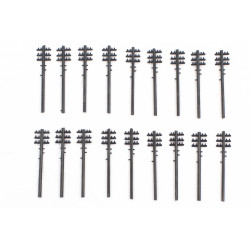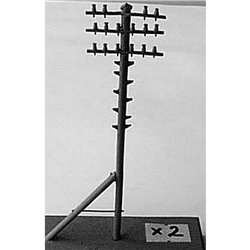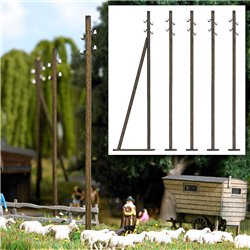The British Rail Double Arrow logo was designed by Gerald Barney in 1965 for the then nationalised British Railways....
No products
Product successfully added to your shopping cart
There are 0 items in your cart. There is 1 item in your cart.
Search Tips
Christmas and New Year
We are dispatching orders every weekday apart from Christmas Day, Boxing Day and New Year's Day.
If you select next day delivery at checkout, please note deliveries are not made on public holidays or Sundays.
The shop in Sandown is open 23rd and 24th December, then closed from 25th December, reopening on 30th December.
What clearance is required when telegraph lines cross railways?
When telegraph lines cross railways, a certain clearance is required to ensure the safety and proper functioning of both the railway and the telegraph lines. This clearance is known as the "line clearance" or "wire clearance".
The specific clearance required can vary depending on the country and the regulations in place. In the United Kingdom, for example, the line clearance for telegraph lines crossing railways is typically 5.5 meters (18 feet) above the top of the rail.
This clearance is necessary to prevent any interference between the telegraph lines and the trains passing underneath. It allows for the safe passage of the trains without any risk of the telegraph lines coming into contact with the trains or any of their equipment.
It is important to note that these clearances are established to ensure the safety and reliability of both the railway and the telegraph lines. Failure to maintain the required clearance can result in accidents, damage to equipment, and disruption of communication.
Click here to receive the tips weekly in your mailbox. You can unsubscribe at any time.










